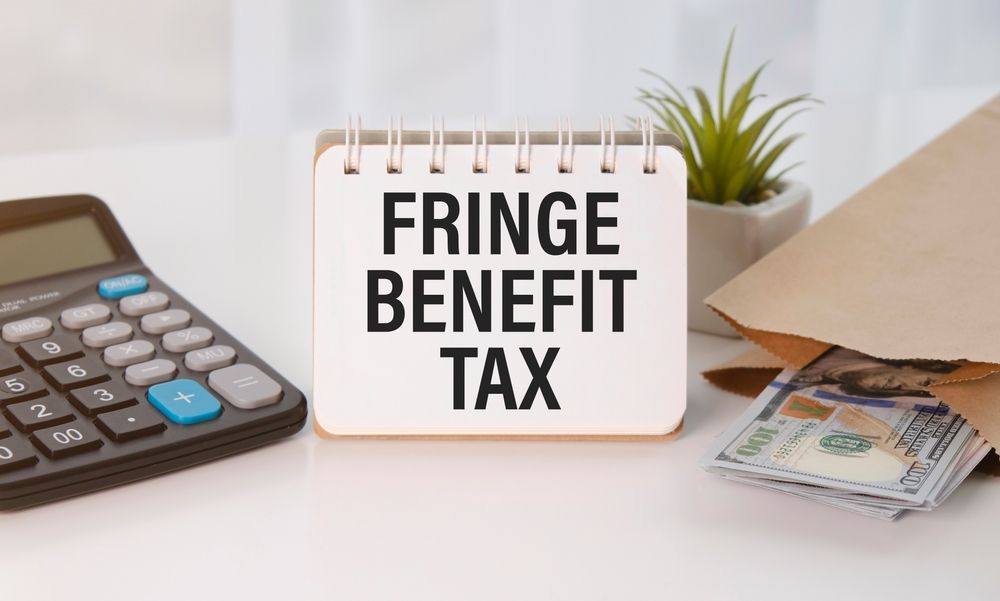
In the evolving landscape of the modern workplace, fringe benefits have become a significant part of compensation packages. Employers offer these perks not only to attract and retain talent but also to enhance employee satisfaction and productivity. However, the tax implications of fringe benefits are often overlooked, leading to potential misunderstandings and compliance issues. Both employers and employees should be well-versed in how these benefits are taxed to make informed decisions and avoid any unpleasant surprises come tax season. In this article, we’ll delve into the intricacies of fringe benefits and taxes, ensuring you have a clear understanding of what to watch for and how to navigate the rules.
Understanding Fringe Benefits
Fringe benefits are additional compensation provided to employees beyond their regular salary or wages. These can range from health insurance and retirement plan contributions to more unique perks like gym memberships or company cars. Fringe benefits are generally considered taxable income, but there are exceptions and nuances.
The IRS defines certain benefits as taxable and others as nontaxable, and some benefits may be partially taxable based on specific conditions or limits. For example, employer contributions to employee health insurance are often exempt from taxes, while the personal use of a company car would typically be considered a taxable benefit.
Employers are responsible for accurately valuing these benefits and including them in the employee’s taxable income unless specific tax rules exclude the benefit. It’s crucial for employers to keep thorough records and for employees to understand the value of their fringe benefits as part of their total compensation package.
Taxable vs. Nontaxable Fringe Benefits
Navigating the distinction between taxable and nontaxable fringe benefits can be a complex task. Generally, most fringe benefits are considered taxable unless expressly excluded by the law. Common nontaxable fringe benefits include health benefits, certain educational assistance, de minimis (minimal) benefits, and contributions to retirement plans within certain limits.
On the other hand, benefits such as personal use of a company vehicle, membership in a country club or gym (unless it’s on the employer’s premises and primarily for the benefit of the employees), and certain types of moving expense reimbursements are taxable. The key for both employers and employees is to stay updated on IRS guidelines, as tax laws can change, and what is nontaxable one year may not be the same the next.
For employers, understanding these rules is paramount to ensure proper payroll tax withholding and reporting. For employees, knowing which benefits are taxable is essential for accurate income reporting and tax planning.
Reporting and Withholding Requirements
Employers have specific reporting and withholding obligations when it comes to fringe benefits. Taxable fringe benefits must be included in an employee’s pay and are subject to income tax withholding as well as Social Security and Medicare taxes (FICA). They must also be reported on Form W-2, Wage and Tax Statement.
The process involves calculating the fair market value (FMV) of the benefit, subtracting any amount the employee paid for the benefit, and including the remainder in the employee’s taxable income. The timing of when a fringe benefit is considered to have been received can also affect the reporting and withholding process.
Employers must be diligent in their payroll processes to ensure compliance with these requirements. Failure to properly withhold and report taxable fringe benefits can result in penalties and interest charges for both employers and employees.
Fringe Benefits for S-Corporations
S-corporations face unique considerations when it comes to fringe benefits. Shareholders who own more than 2% of the company’s shares have different tax treatments for certain benefits compared to other employees. For example, health insurance premiums paid on behalf of such shareholders are generally deductible by the corporation but must be included in the shareholder’s taxable income.
Other fringe benefits, such as group term life insurance, may also have different implications for these shareholders. It’s essential for S-corporations to carefully review the tax treatment of each fringe benefit provided to ensure proper reporting and compliance.
Shareholders and their tax advisors need to be aware of these rules to avoid unexpected tax liabilities and to structure their compensation in the most tax-efficient manner possible.
Planning and Strategy for Employees and Employers
Both employers and employees can benefit from strategic planning around fringe benefits. Employers should design their benefits packages to maximize tax advantages while meeting the needs of their workforce. This might involve offering a mix of taxable and nontaxable benefits, considering the demographics and preferences of their employees.
Employees, on the other hand, should assess the tax implications of their fringe benefits as part of their overall financial planning. They might need to adjust their tax withholdings or make estimated tax payments to cover the tax on taxable benefits. It’s also wise to consult with a tax professional to understand the full impact of fringe benefits on their income and tax situation.
Tax-efficient utilization of fringe benefits can result in significant savings and more effective compensation strategies. Balancing the objectives of talent attraction and retention with tax compliance and efficiency requires ongoing attention and adaptability from both employers and employees.
Fringe benefits are a key component of employee compensation that can have significant tax implications. Both employers and employees must stay informed about the tax treatment of these benefits to ensure compliance and make the most of their compensation packages. By understanding the nuances of fringe benefits taxation, properly reporting and withholding taxes, and engaging in strategic planning, employers can offer competitive benefits while managing costs, and employees can optimize their income and tax positions. As tax laws evolve, staying up-to-date with the latest information will be crucial for navigating the complex landscape of fringe benefits and taxes.
